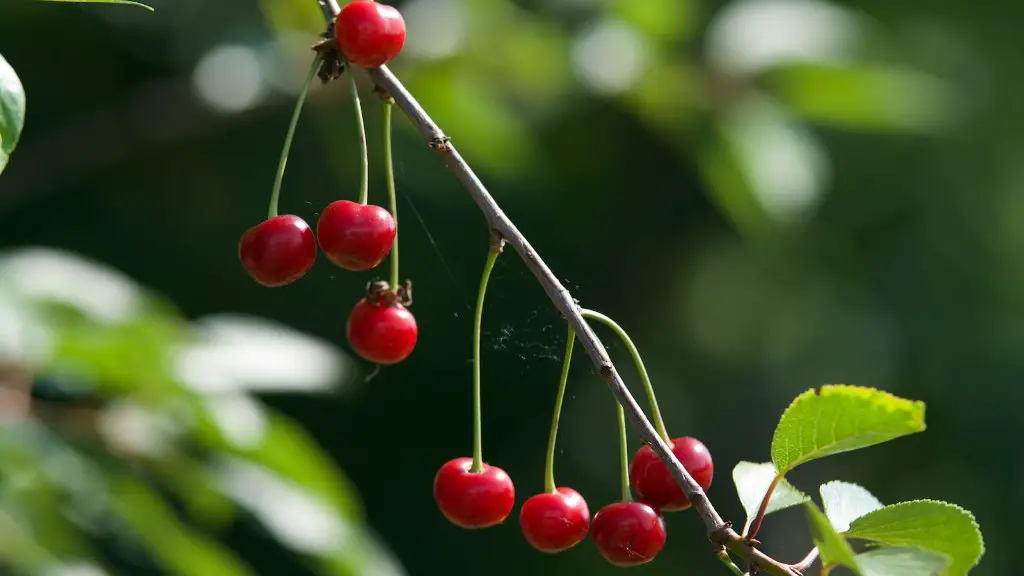Introduction
Avocado trees are native to semi-tropical, temperate and even Mediterranean climates around the world. Generally, these trees can grow to heights between thirty to seventy five feet in the wild, and depending on their growing conditions, can produce a large yield of their creamy, tasty fruit. The tree’s fast growth rate often means people wonder how many years an avocado tree will take to reach full maturity and begin producing fruit.
Germination and Planting
The time it takes for an avocado tree to grow to full maturity depends on how the tree is first planted. If a tree is started from seed, germination may take anywhere between two and six weeks, with seedlings usually sprouting anywhere from six to twentyfour months later. Once the tree is ready for planting, it needs to be planted in well-draining soil with lots of compost and nitrogen, preferably in areas with cooler climates and exposure to full, direct sunlight.
Growth Rate
Avocado trees have a fast growth rate, putting out new leaves, branches and fruit in as little as a single year of growth. Under ideal conditions, a tree can reach full maturity in around three to five years, producing average yields of fifty to seventy fruit per tree in that time, with a good fertilizer regimen enabling more rapid growth.
Harvesting Fruit
The tree may be ready to harvest fruit in three to five years, but the fruit itself may take a little longer to ripen fully unless harvested when immature. Fruit ripeness varies between varieties, with some varieties like the Has, Fuerte and Bacon becoming ready between four and eight months after flowering, while other varieties such as the Gwen and Holiday may take as long as fourteen months before reaching full ripeness.
Soil Requirements for Optimum Growth
Besides nitrogen, soil should also contain sufficient amounts of calcium, magnesium and other micro nutriens like iron and phosphorus for optimal growth. It’s also advisable to plant avocado trees in mineral-rich, composted soil, to ensure that the tree’s root systems maintain proper hydration and nutrition for healthy growth.
Maintenance
Regular watering, pruning, and fertilizer are key to keeping an avocado tree in prime health and encouraging it to produce more fruit. During the first few years, bacteria and fungi such as Phytophthora can sometimes impact the tree’s productivity. Because they are susceptible to strong winds, avocado trees should be planted away from areas with strong gusts of wind.
Climate Consideration
Avocado trees are vulnerable to frost and require temperatures to remain over 60ºF (16ºC). Trees planted in mild climates may mature faster than those in colder, temperate climates. For example, a tree planted in South America’s subtropical climate may reach full maturity in three years, whereas in California’s temperate climate, full maturity can take longer due to cold winters and shorter days.
Light Requirements
Light is essential for optimal growth. Avocado trees need full, direct sunlight at least 8-10 hours per day to produce a good yield of fruit, while they should also be sheltered from strong north or east winds. If the tree is planted in an area that receives more shade than sunlight, it may need more nitrogen, as well as additional amounts of water and fertilizer to reach its full potential.
Long Term Care
Once an avocado tree reaches maturity, the key to long-term maintenance is proper pruning, effective pest and disease control, and diligent soil and water management. Annual pruning should be done during summertime, when the tree is in its dormant period, this encourages healthier and more numerous branches and fruits. Disease control involves proper plant care and minimizing contact with pests such as worms or ants.
Watering Schedule
Avocado trees require regular irrigation to stay healthy throughout the growing season. Trees need to be watered three to four times a week depending on their soil type and local conditions. Trees placed in hot, dry areas may require more frequent watering, while those in mild climates may need less.
Fertilizer Needs
Avocado trees should be fertilized two times a year, during the blooming period and again during the fruit-setting period. Ideally, a balanced fertilizer should be used, with a 10:10:10 ratio of nitrogen, phosphorus and potassium. Fertilizing helps to promote faster growth and better production of fruits.
Creating Optimal Growing Conditions
For an avocado tree to reach maturity, all the necessary steps must be carried out in order to create an optimal growing environment. These steps include proper planting, consistent watering, effective pest control, adequate sunlight, and the use of the right fertilizer. When all the conditions are met, an avocado tree begins to quickly grow and produce fruit sooner rather than later.


